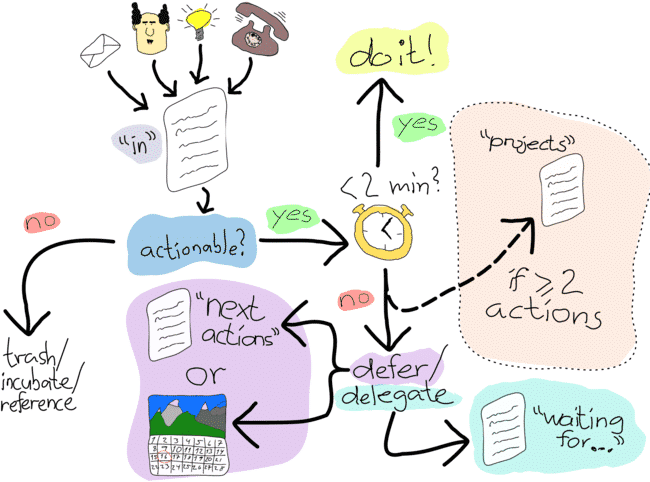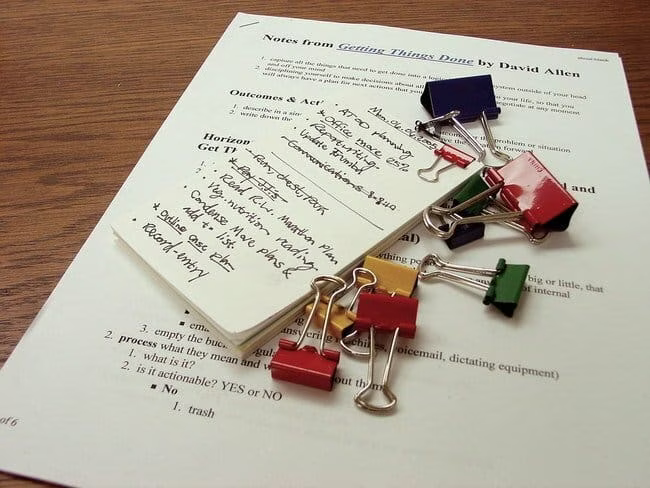The Most Important Productivity Lesson I Ever Learned

Back in 2003, right after university, I read a book that completely upleveled my productivity.
The book was called Getting Things Done >, by David Allen.
As the image above shows, it’s full system, but I’m going to save you a ton of time and just tell you the most important takeaway.
This is for things you’re worried about forgetting, not for creative contemplation.
Never let tasks or ideas sit in your mind without being captured.
It’s that simple. I’ll explain why.
The system I still use today
Whenever I go somewhere with both old friends and new people, my friends often start with,
Ok, check this out…
…and they look at me and have me pull out my Oxford unruled index cards, and my telescoping Space Pen.

And I do. I pull them out. Because I’ve been using the system faithfully for around 17 years.
The system itself is based on constantly capturing what needs to be done, determining if you can do it immediately, if it should be deferred, delegated, or broken into next actions.
And then you regularly check priorities and refresh accordingly.
But don’t worry about any of that unless you want to read the book and dive all the way in.
The only thing you need to remember
The entire system is based on the idea that your subconscious is built in a certain way. Specifically, it’s built to work on things that it thinks you might need later.
It’s like Clippy being annoying with the popups.
Your subconscious holds onto things it thinks you might be forgetting, and regularly interrupts you about them.
The problem with this is that people are not good at multi-tasking, despite all the hype in previous years, and we really need to be able to focus on a single task to get it done.
But if we’ve burdened our subconscious with tons of tasks that it heard and captured—but we didn’t write down—then it’ll be in perpetual state of panic about them, and it’ll constantly harrass you while you’re trying to work.
That’s the reason for the Prime Directive.
Never let tasks or ideas sit in your mind without being captured.
Capture them. Immediately.
I still keep my index cards and pen with me, because I like to draw as well as capture text, but you can use your mobile device for this as well.
That’s it. Capture. Everything. And then go back later (ever day or two), and put them into order, prioritize, etc.—using whatever system. But always keep your mind clear.
This keeps your mind available to fully immerse in your current task.
Summary
GTD is an awesome system, but you don’t need to do the whole thing.
The most important concept is that the subconscious captures any task that you didn’t properly capture, and then it occupies your mental resouces trying to process and remind you about them.
The way to deal with this is by never letting your subconsious play that role, which you do by capturing everything yourself.
This tells your subconscious to chill—because you have it handled.
This in turn lets you have laser focus when you sit down to do a given task, and you get way more done.
I don’t know all the variables involved, but I’ve used this system for almost two decades, and I have written close to 3,000 essays in that time, read over 1,000 reading, and done dozens of other projects.
And I honestly credit my ability to produce this type of output—in large part—to the GTD system.
Try it.
Notes
Image from this excellent GTD summary. More >